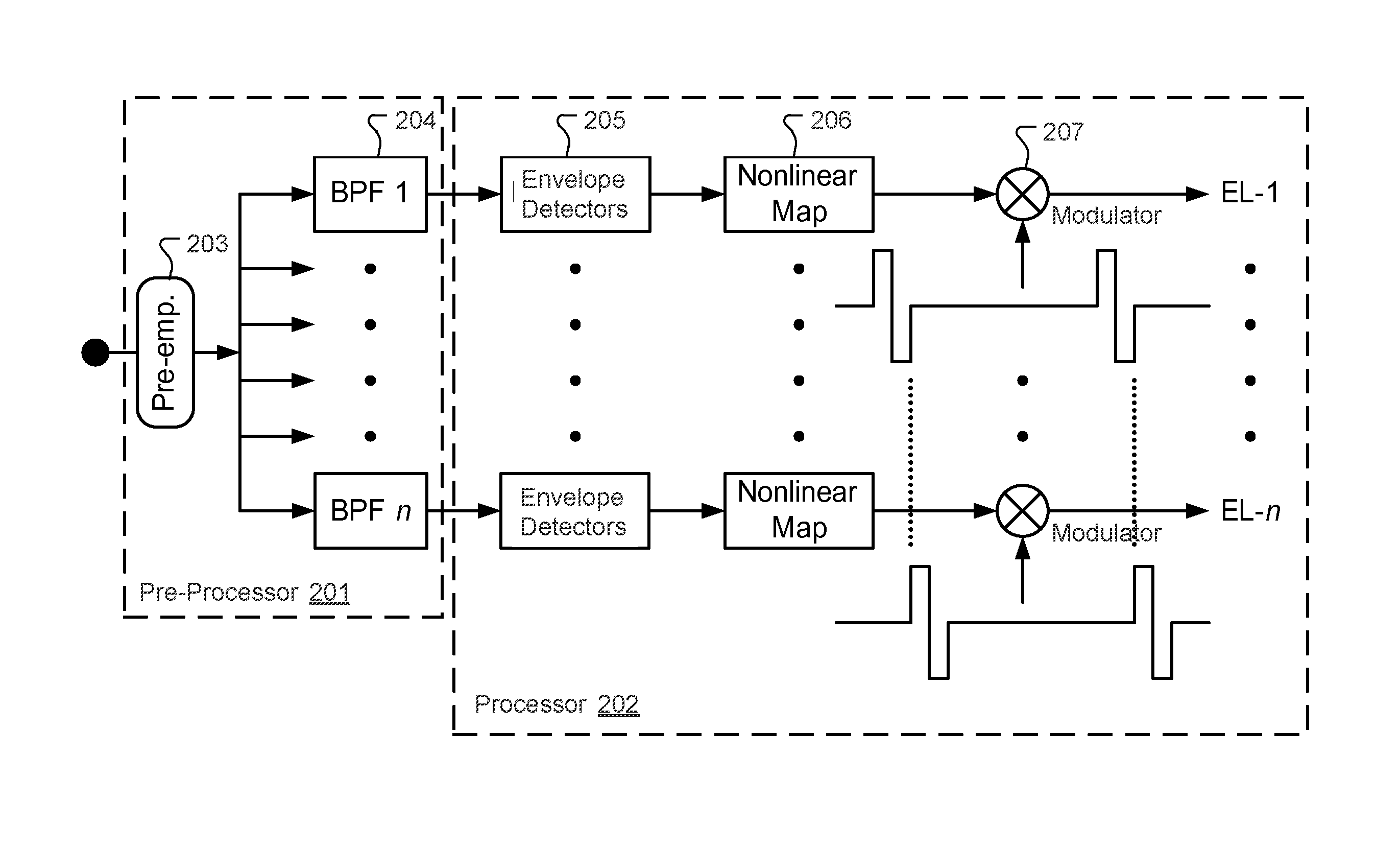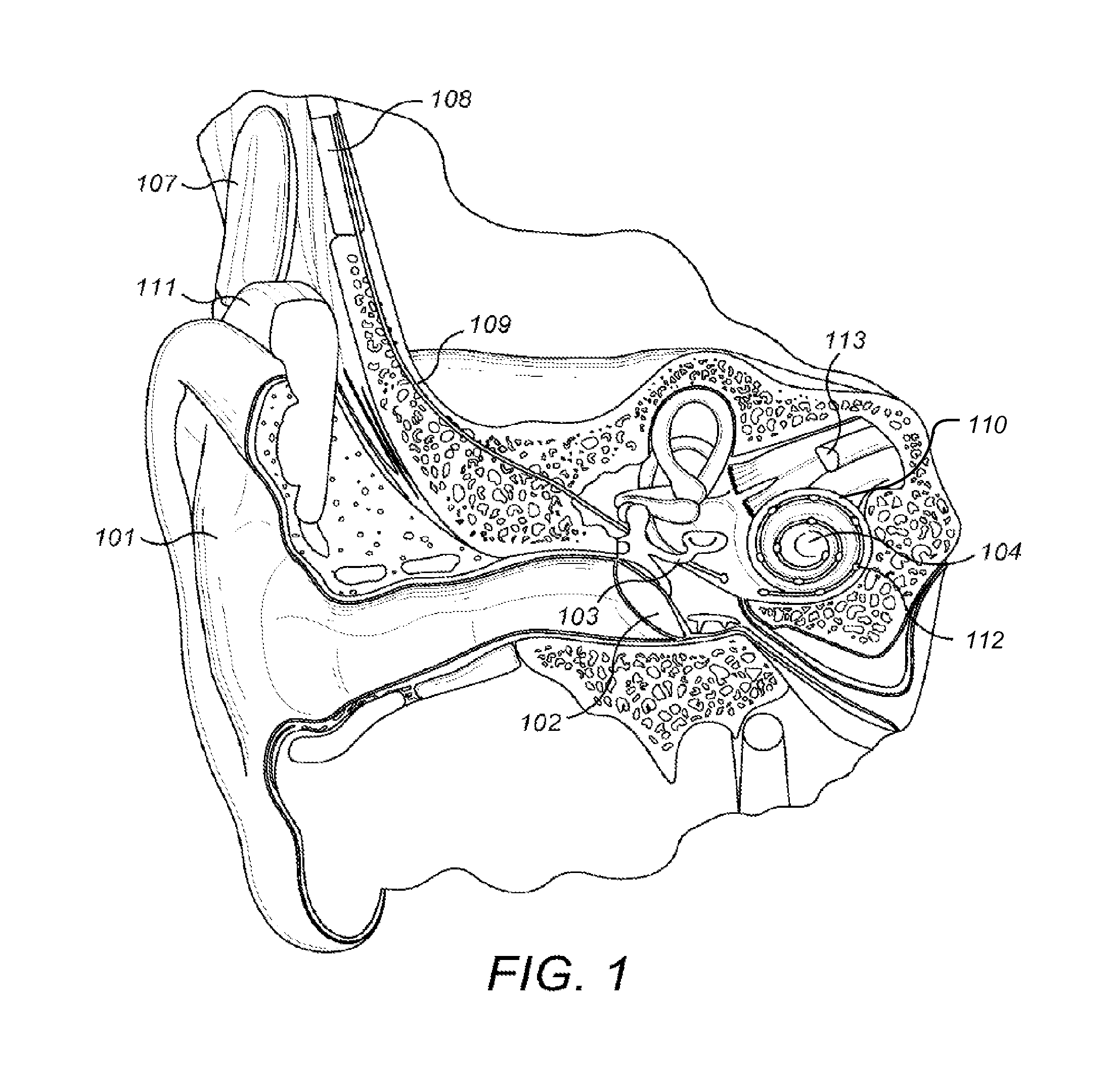Auditory Prosthesis Using Stimulation Rate as a Multiple of Periodicity of Sensed Sound
- Summary
- Abstract
- Description
- Claims
- Application Information
AI Technical Summary
Benefits of technology
Problems solved by technology
Method used
Image
Examples
Embodiment Construction
[0021]As discussed above, representation of the periodicity in an analog signal by a discrete system is inherently limited by its temporal resolution. For cochlear implants, this means that the highest stimulation rate (which is usually also the highest sensing rate) is the limit for the temporal resolution. If the input audio signal has a periodicity with a frequency f(a) and the sensing / stimulation rate of the CI system has a frequency f(e), a beating characterized by both frequencies is generated. Consequently, the electrical pulses may carry a jitter with respect to the zero crossing events. FIG. 5 illustrates this problem of the varying jitter between stimulation signals (solid lines) and sensing pattern (dashed lines). One way to reduce the problem of such jitter is to increase the sensing / stimulation rate. But that is rather energy consuming and ultimately has other technical limitations.
[0022]Embodiments are directed to reducing or eliminating unwanted jitter in auditory pro...
PUM
 Login to View More
Login to View More Abstract
Description
Claims
Application Information
 Login to View More
Login to View More - R&D
- Intellectual Property
- Life Sciences
- Materials
- Tech Scout
- Unparalleled Data Quality
- Higher Quality Content
- 60% Fewer Hallucinations
Browse by: Latest US Patents, China's latest patents, Technical Efficacy Thesaurus, Application Domain, Technology Topic, Popular Technical Reports.
© 2025 PatSnap. All rights reserved.Legal|Privacy policy|Modern Slavery Act Transparency Statement|Sitemap|About US| Contact US: help@patsnap.com



